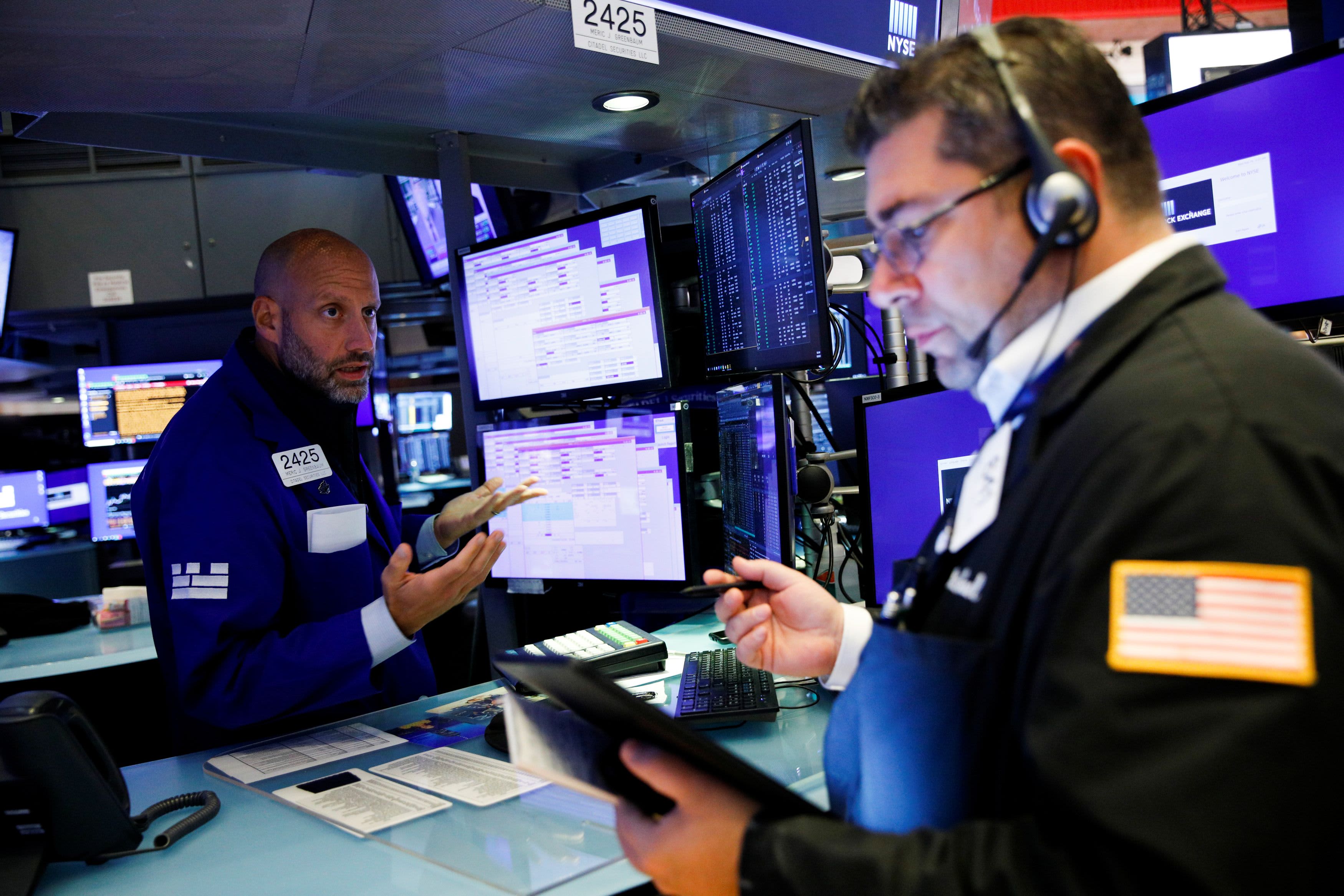
The Dow Jones Industrial Average moved lower on Thursday as Wall Street looked to close out a rough month.
The 30-stock average dropped 370 points, or more than 1%, after rising at the opening bell. The broader S&P 500 was down 0.5%, while the tech-heavy Nasdaq Composite ticked up 0.2%.
The weakness for the market came on the final day of what has been a rough month for equities. The late afternoon moves put the Dow down more than 3% for September, while the S&P 500 was down by roughly 4% and the Nasdaq by more than 4%.
“September lived up to its reputation and dented stock portfolio returns, but not too badly,” wrote Ed Yardeni of Yardeni Research. “There has been a lot of concern that higher wages, higher energy prices, and higher transportation costs will weigh on earnings for the remainder of this year and into 2022. It’s certainly something we’ll be tracking. But so far, analysts remain relatively sanguine.”
Concerns about inflation and supply chain issues hampered stocks on Thursday. Shares of Bed Bath & Beyond fell more than 20% in early trading after the company said those issues hurt the company’s second quarter results, and the news also weighed on fellow retail stocks. Walgreens Boots Alliance and Home Depot fell more than 2%, making them two of the worst performers in the Dow.
Energy and financial stocks, which have been some of the best performers in recent weeks, took a step back on Thursday, weighing on the Dow. Shares of Goldman Sachs and JPMorgan were down by more than 1%.
Tech stocks, however, pushed higher as the Nasdaq tried to snap a four-day losing streak. Tech stocks have been hit by the recent jump for 10-year Treasury yield, which broke above 1.567% earlier in the week. The measure retreated slightly on Thursday.
Rising yields, fueled by concerns over inflation and the Federal Reserve’s signals that it will soon begin winding down its pandemic-era asset purchases, are seen as a negative for tech stocks because they make far-off future profits less attractive to investors.
“We’ve been talking about spooky season — September and October — and the expectation of about a 5% dip from the high, which we’ve had on an intraday basis. But we’ve said we don’t expect a correction,” said David Bianco, chief investment officer at DWS Group.
“We expect yields to climb, and that’s why we’re overweight banks, but we don’t expect yields to surge. And without a surge in yields, we can live with these [valuations],” Bianco added.
Within tech, chip stocks like Nvidia and Micron were higher after weighing on the broader market on Wednesday. Netflix set a new intraday record high.
“We wouldn’t get caught up in any end-of-quarter machinations today and continue to advise fading rallies (especially in tech) as the coming weeks will stay rocky,” wrote Adam Crisafulli of Vital Knowledge.
September’s losses have led to a middling third quarter for the market. Entering Friday, the Dow was slightly in the red for the three-month period, while the Nasdaq Composite was just about flat. The S&P 500 was up 1.4% and was still up 16% on the year.
October has a reputation for some violent sell-offs but overall is typically the start of a better seasonal performance for stocks. The S&P 500 averages a 0.8% gain for the month, according to the Stock Trader’s Almanac.
Investors were also keeping an eye on Washington as Senate was poised to pass a bill that would fun the government through early December. The deal would still need to pass the House.
Fed Chair Jerome Powell and Treasury Secretary Janet Yellen were testifying before the House Financial Services Committee on Thursday morning. Yellen reiterated her call for Congress to raise the debt ceiling, saying that failure to do so would be “catastrophic.”
On the data front, initial jobless claims for the prior week came in at 362,000. Economists were expecting a print of 335,000, according to Dow Jones.
Become a smarter investor with CNBC Pro.
Get stock picks, analyst calls, exclusive interviews and access to CNBC TV.
Sign up to start a free trial today




